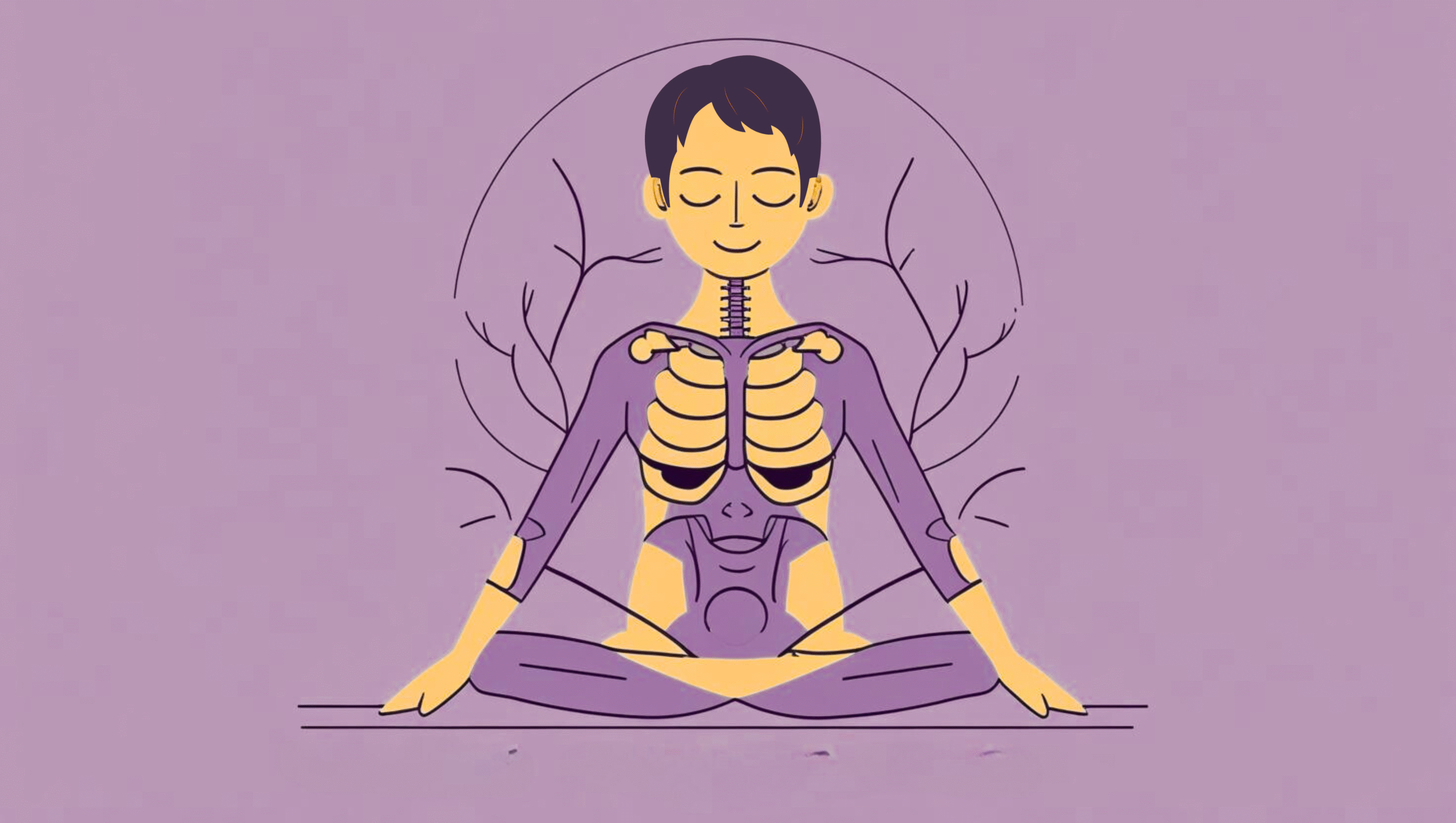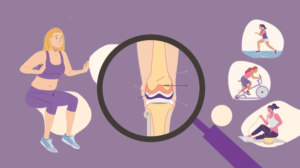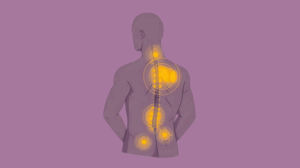Turning 30 marks an important milestone for your body especially your bones and joints. While youth offers natural resilience, post-30 our body begins to lose bone mass and joint flexibility, often without noticeable symptoms until serious issues arise.
According to the National Institutes of Health, most people reach their peak bone mass around age 30, after which bone remodeling shifts bone resorption outpaces formation, leading to weakening bones over time.
Joint discomfort also creeps in slowly due to wear and tear, lifestyle habits, and inflammatory reactions. But the great news is, you can maintain and even enhance bone and joint health well into your later years by adopting a structured approach.
This article dives deep into the causes of bone and joint decline, essential nutrients, lifestyle adjustments, exercise routines, and prevention tips, all tailored to those in their 30s and beyond.
Why Bone and Joint Health Declines After 30
Declining Bone Density
By the time you’re 30, your body slows down its bone-building process. This natural shift can increase your risk of osteopenia and osteoporosis, especially in women post-menopause.
Cartilage Wear and Joint Degeneration
The smooth, rubbery tissue cushioning your joints cartilage begins to degrade. Combine that with reduced synovial fluid and poor posture or excess weight, and joint pain becomes more common.
Hormonal Changes
Testosterone and estrogen help regulate bone metabolism. A drop in these hormones can reduce bone density, particularly in women after 35–40.
The Role of Nutrition in Bone and Joint Strength
A strong skeletal system needs consistent nutritional support. Below are the most important nutrients:
Calcium – The Building Block of Bones
- Function: Makes up ~99% of bone mineral content.
- Daily Need: 1000–1200 mg for adults 30+
- Sources: Milk, cheese, yogurt, tofu, sesame seeds, leafy greens, fortified plant milk.
Vitamin D – Calcium’s Best Friend
- Function: Enhances calcium absorption, supports bone regeneration.
- Sources: Sunlight (20 minutes/day), fatty fish, mushrooms, fortified juices.
- Deficiency Warning: Can lead to bone softening (osteomalacia).
Magnesium – The Unsung Hero
- Function: Regulates calcium transport, needed for bone crystal formation.
- Sources: Almonds, spinach, pumpkin seeds, legumes, whole grains.
Vitamin K2 – The Bone Binder
- Function: Activates proteins that bind calcium to bones instead of arteries.
- Sources: Natto, fermented cheese, egg yolks.
Protein – Essential for Structure and Recovery
- Function: Builds bone matrix (collagen), strengthens muscle to support joints.
- Sources: Eggs, chicken, fish, lentils, paneer, soy, protein shakes.
Daily Habits to Strengthen Bones and Joints
Exercise Regularly
Physical activity stimulates bone-forming cells and maintains flexibility.
Weight-Bearing Exercises:
- Brisk walking
- Jogging or stair climbing
- Jump rope
- Hiking
Resistance Training:
- Dumbbells, bodyweight squats, resistance bands
- Improves muscle strength, reducing pressure on joints.
Flexibility Work:
- Yoga or Pilates enhances balance, alignment, and posture.
- Reduces injury risk and promotes joint lubrication.
Aim for at least 150 minutes of moderate activity per week.
Stay Hydrated
Synovial fluid, essential for joint movement, is water-based. Even mild dehydration leads to stiffness, reduced shock absorption, and increased inflammation.
Target: 2.5–3 liters/day, more if active or in hot climates.
Watch Salt and Caffeine Intake
- High sodium intake increases calcium loss through urine.
- Excessive caffeine may interfere with calcium absorption.
Tip: Limit salt to <2,300 mg/day and caffeine to <300 mg/day.
Avoid Smoking and Limit Alcohol
- Smoking decreases blood supply to bones, hampers healing, and lowers estrogen.
- Chronic alcohol use interferes with vitamin D metabolism.
One of the biggest risk factors for osteoporosis is smoking.
Red Flags: When to Take Action
If you’re in your 30s and experience these symptoms frequently, it’s time to get checked:
- Constant lower back pain
- Joint pain after mild activity
- Cracking or popping joints
- Reduced height or posture changes
- Sudden fractures from minor trauma
Consult your doctor for DEXA scans or blood tests (calcium, vitamin D, CRP, hormone levels).
Joint-Specific Protection Tips
Knees
- Avoid sitting cross-legged for long.
- Strengthen surrounding muscles quads, hamstrings, calves.
- Wear proper shoes with arch support.
Wrists
- Use ergonomic keyboards and mouse pads.
- Do wrist flexor/extensor stretches if working on a computer.
Lower Back
- Practice core exercises like planks.
- Sleep on a firm mattress and avoid soft couches.
Myths About Bone & Joint Health Debunked
“Milk alone is enough.”
→ Calcium needs magnesium, D, K2, and protein to be absorbed and utilized properly.
“Exercise damages joints.”
→ Only excessive or improper form hurts joints. Moderate resistance training improves strength.
“Only women get osteoporosis.”
→ Men lose bone mass too, especially after 40, though later than women.
“Cracking knuckles causes arthritis.”
→ No evidence supports this. Cracking noise is gas bubbles in joint fluid.
Advanced Therapies (For Those With Chronic Pain or Loss)
If lifestyle changes aren’t helping or if you have early bone/joint degeneration, consider:
- Physical therapy
- PRP (Platelet-Rich Plasma) Therapy
- Hyaluronic Acid Injections for knees
- Hormone Replacement Therapy (HRT) for women with bone loss post-menopause
Always discuss these with a qualified orthopedic specialist or endocrinologist.
Conclusion
It’s never too late or too early to take care of your bones and joints. After 30, your body begins subtle declines in strength and mobility, but with intentional nutrition, consistent movement, and preventive strategies, you can enjoy an active, pain-free life well into old age.
Make bone and joint health a lifelong priority, not just a response to pain, and you’ll gain the strength, flexibility, and endurance to support everything you do.
References
- Rizzoli, R., Bischoff-Ferrari, H., Biver, E., Bousson, V., Dawson-Hughes, B., Ebeling, P. R., … & Kanis, J. A. (2018). Benefits and safety of dietary protein for bone health—a consensus paper endorsed by ESCEO & IOF. Osteoporosis International, 29(9), 1933–1948. https://doi.org/10.1007/s00198-018-4640-3
- Wu, J., Stewart, A., & Yu, R. (2021). Dietary protein intake and bone mineral density: an umbrella review of systematic reviews and meta-analyses. Osteoporosis International, 34(7), 1357–1367. https://doi.org/10.1007/s00198-023-06709-7
- Beasley, J. M., LaCroix, A. Z., Neuhouser, M. L., Wactawski-Wende, J., Johnson, K. C., Manson, J. E., … & Thomson, C. A. (2013). Protein intake and bone health in postmenopausal women: results from the Women’s Health Initiative. Journal of Bone and Mineral Research, 28(3), 467–473. https://doi.org/10.1002/jbmr.1795
- Heaney, R. P., & Layman, D. K. (2007). Amount and type of protein influences bone health. Journal of Nutrition, 137(5), 1417S–1420S. https://doi.org/10.1093/jn/137.5.1417S
- Zittermann, A., Schmidt-Gayk, H., & Sichert-Hellert, W. (2000). Vitamin D supplementation enhances calcium absorption and bone health. Journal of Clinical Endocrinology & Metabolism, 85(10), 3608–3615. https://doi.org/10.1210/jcem.85.10.6875
- Ross, A. C., Taylor, C. L., Yaktine, A. L., Del Valle, H. B. (Eds.). (2011). Dietary Reference Intakes for Calcium and Vitamin D. National Academies Press.
- Rizzoli, R., Reginster, J. Y., Arnal, J. F., Bautmans, I., Beaudart, C., Bischoff-Ferrari, H., … & Kanis, J. A. (2014). Quality protein intake is important to preserve bone and muscle mass in older adults. Osteoporosis International, 25(12), 2649–2651. https://doi.org/10.1007/s00198-014-2795-9
- Misra, D. P., Berry, S. D., Broe, K. E., McLean, R. R., Cupples, L. A., Tucker, K. L., Kiel, D. P., Hannan, M. T. (2011). Does dietary protein reduce hip fracture risk in elders? The Framingham Osteoporosis Study. Osteoporosis International, 22(1), 245–249. https://doi.org/10.1007/s00198-010-1331-4
- Hun, D. J., & Bierma-Zeinstra, S. M. (2019). Osteoarthritis—as the journal The Lancet states, bone remodeling reflects nutritional and lifestyle factors. The Lancet, 393(10182), 1745–1759. https://doi.org/10.1016/S0140-6736(19)30417-9























